It can also get used to lower the book value of intangible assets over a period of time. In accounting, amortization is a method of obtaining the expenses incurred by an intangible asset arising from a decline in value as a result of use or the passage of time. Amortisation is the acquisition cost minus the residual value of an asset, calculated in a systematic manner over an asset’s useful economic life. The amortization of loans is the process of paying down the debt over time in regular installment payments of interest and principal.
- Under the sum-of-the-years digits method, a company recognizes a heavier portion of depreciation expense during the earlier years of an asset’s life.
- Generally speaking, there is accounting guidance via GAAP on how to treat different types of assets.
- The dollar amount represents the cumulative total amount of depreciation, depletion, and amortization (DD&A) from the time the assets were acquired.
- It’s a technique used to help reduce the book value of any loans you have.
- Whether it is a company vehicle, goodwill, corporate headquarters, or a patent, that asset may provide benefit to the company over time as opposed to just in the period it is acquired.
- The former includes an interest-only period of payment, and the latter has a large principal payment at loan maturity.
Paying Off a Loan Over Time
A loan doesn’t deteriorate in value or become worn down over use like physical assets do. Loans are also amortized because the original asset value holds little value in consideration for a financial statement. Though the notes may contain the payment history, a company only needs to record its currently level of debt as opposed to the historical https://www.warrantyvoid.us/page/41/ value less a contra asset. Amortization reflects the fact that intangible assets have a value that must be monitored and adjusted over time. The amortization concept is subject to classifications and estimates that need to be studied closely by a firm’s accountants, and by auditors that must sign off on the financial statements.
Get to Know IRAS and IRAS Approved Accounting Software Recommendation
If you are an individual looking for various amortization techniques to help you on your way to repay the loan, these points shall help you. Consequently, the company reports an amortization for the software with $3,333 as an amortization expense. Consider the following examples to better understand the calculation of amortization through the formula shown in the previous section.
- This will be seen as amortization of the copyright with the straight-line method.
- Thus, it writes off the expense incrementally over the useful life of that asset.
- It’s always good to know how much interest you pay over the lifetime of the loan.
- However, the amount that goes towards principal will increase as the amount of interest decreases.
- It can also get used to lower the book value of intangible assets over a period of time.
Why Do We Amortize a Loan Instead of Depreciate a Loan?
Interest is computed on the current amount owed and thus will become progressively smaller as the principal decreases. Within the framework of an organization, there could be intangible assets such as goodwill and brand names that could affect the acquisition procedure. As the intangible assets are amortized, we shall look at the methods that could be adopted to amortize these assets.
What Is an Amortization Schedule? How to Calculate with Formula
Amortization refers to the reduction of a debt over time by paying the same amount each period, usually monthly. With amortization, the payment amount consists of both principal repayment and interest on the debt. As more principal is repaid, less interest is due on the principal balance. Over time, the interest portion of each monthly payment declines and the principal repayment portion increases. Amortization is a technique of gradually reducing an account balance over time. When amortizing loans, a gradually escalating portion of the monthly debt payment is applied to the principal.
Amortization Methods
Buyers may have other options, including 25-year and 15-years mortgages, the most preferred being the mortgage for 30 years. The amortization period not only affects the length of the loan repayment but also the amount of interest paid for the mortgage. In general, longer depreciation periods include smaller monthly payments and higher total interest costs over the life of the loan. This is especially true when comparing depreciation to the amortization of a loan. Amortization is similar to depreciation but there are some differences. Perhaps the biggest point of differentiation is that amortization expenses intangible assets while depreciation expenses tangible(physical) assets over their useful life.
In other words, amortization is recorded as a contra asset account and not an asset. To know whether amortization is an asset or not, let’s see what is accumulated amortization. With the lower interest rates, people often opt for the 5-year fixed term. Although longer terms may guarantee a lower rate of interest if it’s a fixed-rate mortgage.
In accounting, amortization is conceptually similar to the depreciation of a plant asset or the depletion of a natural resource. This is often because intangible assets do not have a salvage, while physical goods (i.e. old cars can be sold for scrap, outdated buildings can still be occupied) https://emirates.su/news/1177405601.shtml may have residual value. The formulas for depreciation and amortization are different because of the use of salvage value. The depreciable base of a tangible asset is reduced by the salvage value. The amortization base of an intangible asset is not reduced by the salvage value.
Like the wear and tear in the physical or tangible assets, the intangible assets also wear down. Owing to this, the tangible assets are depreciated over time and http://echr-base.ru/CED76.jsp the intangible ones are amortized. The intangible assets have a finite useful life which is measured by obsolescence, expiry of contracts, or other factors.

